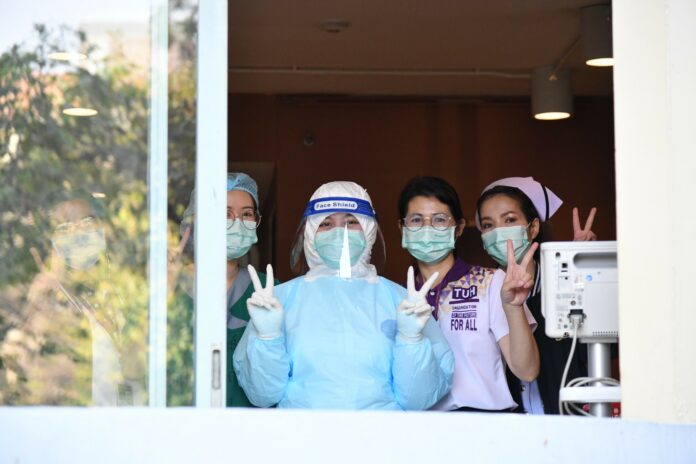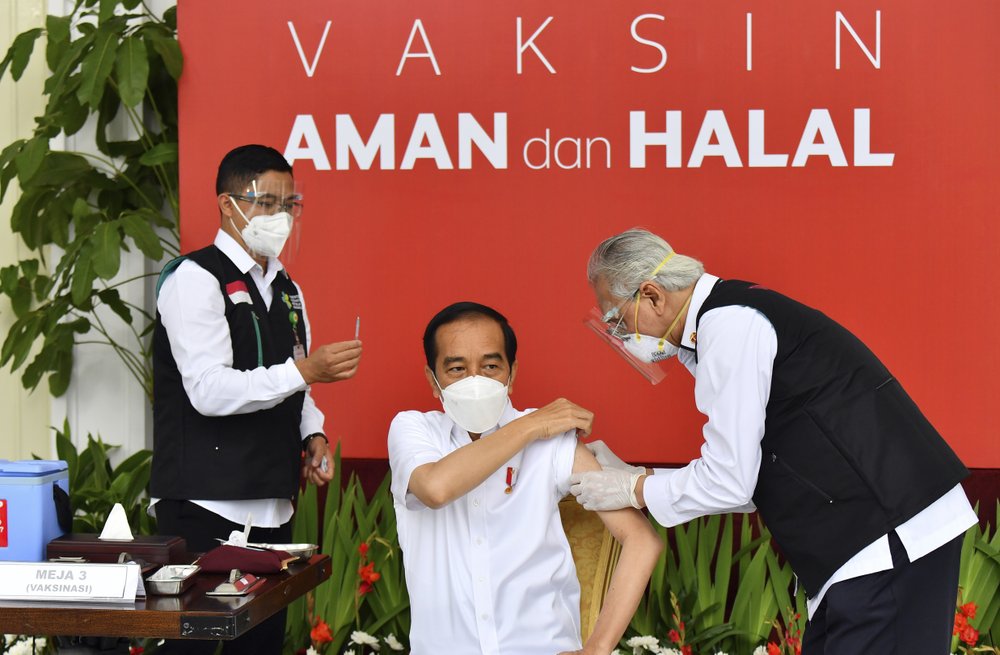
BANGKOK — There is about a 50.4 percent chance you’ve seen reports by Thai media asserting that the Chinese-made coronavirus vaccine to be used in Thailand’s first round of vaccination is “only 50.4 percent effective.”
But a closer look beyond the deluge of those news articles, which mostly rely on translation without consulting expert opinions, shows that the truth about the COVID-19 vaccine made by Beijing-based Sinovac Biotech is more nuanced than what the media suggests.
For a start, the widely reported figure of “50.4 percent” came from Western media articles reporting a trial data of Sinovac’s vaccines released by researchers in Brazil, but left out another important part of the same story, which stated that the efficacy is as high as 78 percent among coronavirus patients who display mild symptoms.
“There are many figures of percentage that need to be considered in detail,” Health ministry deputy perm-sec Supakit Sirilak said at today’s news conference.
The efficacy rate of the Sinovac coronavirus vaccines was put at 50.4 percent by researchers at the Butantan Institute in Brazil, who included data from a group of “very mild infections” among those who received the vaccine that did not require clinical assistance.
However, Butantan Institute also said the vaccine is 78 percent effective in preventing mild cases that needed treatment, and 100 percent effective in staving off moderate to serious cases – an important part of the story that didn’t make it to many articles translated and published by Thai media.
It Can Save Lives
Even with the general efficacy of 50.4 percent, the Sinovac products will still be sufficient in achieving Thailand’s goal of immunizing residents in the high-risk areas from the coronavirus, and lessening their chance of falling ill, said Supaporn Phumiamorn, Director of Institute of Biological Products at the Department of Medical Science.
“Don’t forget we’re talking about a worldwide pandemic,” Supaporn said. “At least, the vaccine will decrease the severity of the symptoms, as well as transmission of the disease among the public.”
Supaporn said the vaccine met the standards of passing the threshold of 50 percent efficacy set by both the World Health Organization and the United States Food and Drug Administration.
The efficacy rate is similar to that of flu shots in the United States, which range from 29 percent to 55 percent – yet still played a significant role in reducing deaths and illnesses from the disease.

And if enough people were immunized, a COVID-19 vaccine wouldn’t need to be near-perfect to have a substantial impact in the community, Gregory Poland, director of the Mayo Clinic’s Vaccine Research Group told NBC News back in November.
“If you had a 60 or 70 percent effective vaccine and everybody took it, you might actually be reaching toward herd immunity and potentially then dampen down this pandemic,” Poland was quoted as saying.
The U.S. National Public Radio also explained in September that a vaccine with an efficacy of 50 percent would be immensely helpful in decreasing severe symptoms for those who did get sick and push the population closer to herd immunity.
“When we talk ‘vaccine effectiveness,’ what we’re talking about is, ‘How effective was the vaccine at preventing actual disease?’” L.J. Tan, chief strategist of the nonprofit Immunization Action Coalition, told the NPR. “If you vaccinate 100 people, 50 people will not get disease.”
Setting Priorities
A report by the BBC stressed that it’s too soon to pinpoint which vaccine is more effective than others based on early clinical test data available at this moment.
“On the face of it, the 50% effectiveness figure isn’t as good as Oxford’s 70% or Pfizer and Moderna’s 95%,” BBC health reporter Philippa Roxby wrote. “But trials are run very differently in different countries – the numbers of volunteers enrolled varies wildly, as do the criteria used to test how much protection the vaccines offer.”
She also wrote, “In the long term, many vaccines against Covid are needed to vaccinate the world and, inevitably, some will perform better than others – but giving as many people as possible some protection is the priority.”
The Thai government said it has ordered 2 million doses of the Sinovac vaccine, which would be first distributed to “vulnerable populations” in the five provinces hardest hit by the coronavirus. The campaign is expected to start in February.
The rest of the Thai population will receive the vaccine developed jointly by Oxford University and British pharmaceutical firm AstraZeneca. Thailand said it has secured over 60 million doses from AstraZeneca.
The Thai Food and Drug Administration has yet to formally approve any vaccine for domestic use. FDA deputy sec-gen Surachoke Tangwiwat said the agency is still studying the documents filed by both companies.
















































